
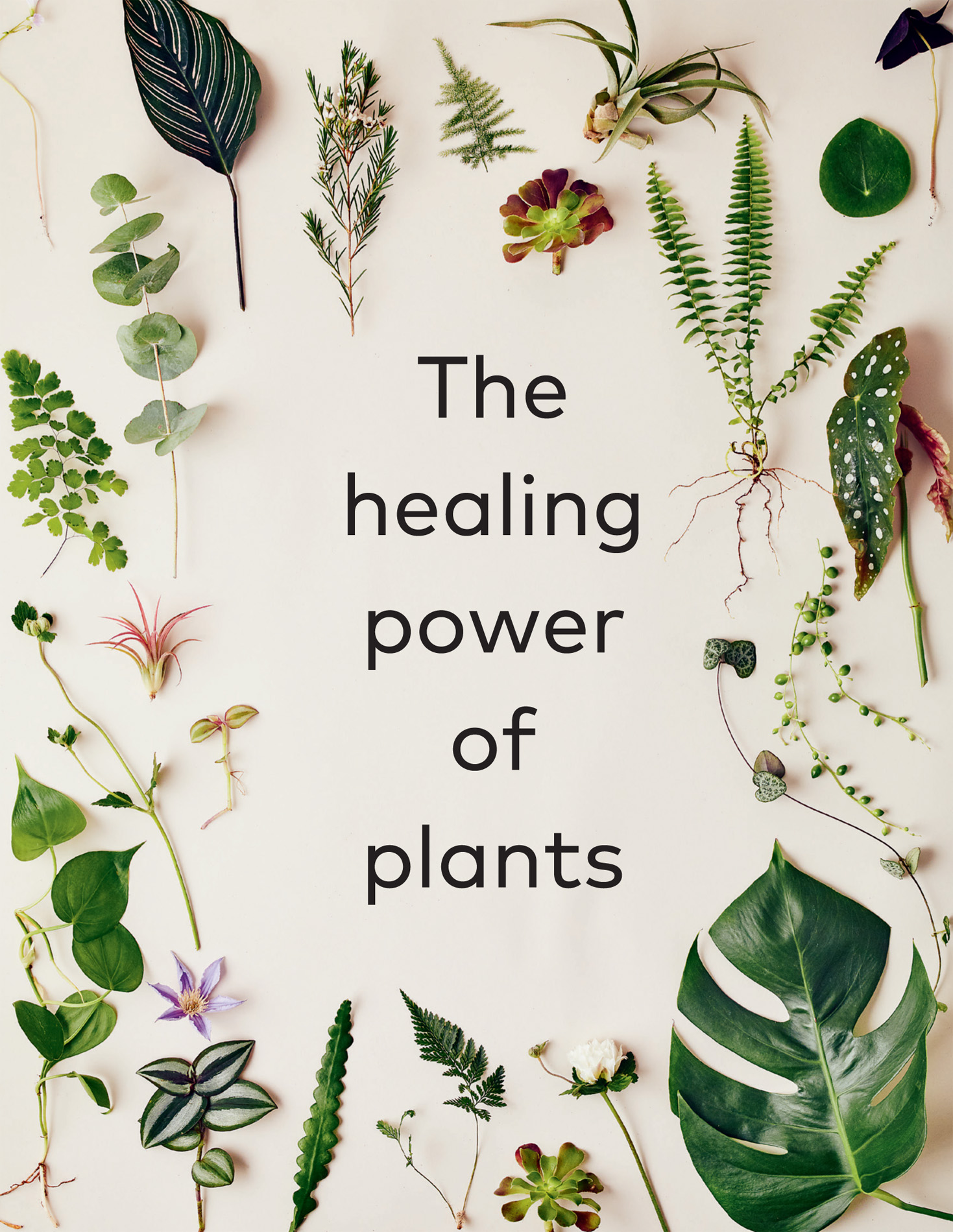
THE HEALING POWER OF PLANTS
The hero house plants that will love you back
FRAN BAILEY


CONTENTS
ABOUT THE AUTHOR
Award-winning horticulturist Fran Bailey grew up on a cut flower nursery near York, where her Dutch father encouraged her love of all things botanical. After studying at the Welsh College of Horticulture she moved to London working as a freelance florist. Later she opened her first shop the Fresh Flower Company in South London expanding into houseplants with the opening of Forest in 2013, which she runs with the help of her daughters. Fran has written two other house plant books in collaboration with the RHS. Visit forest.london or follow @forest_london on Instagram.
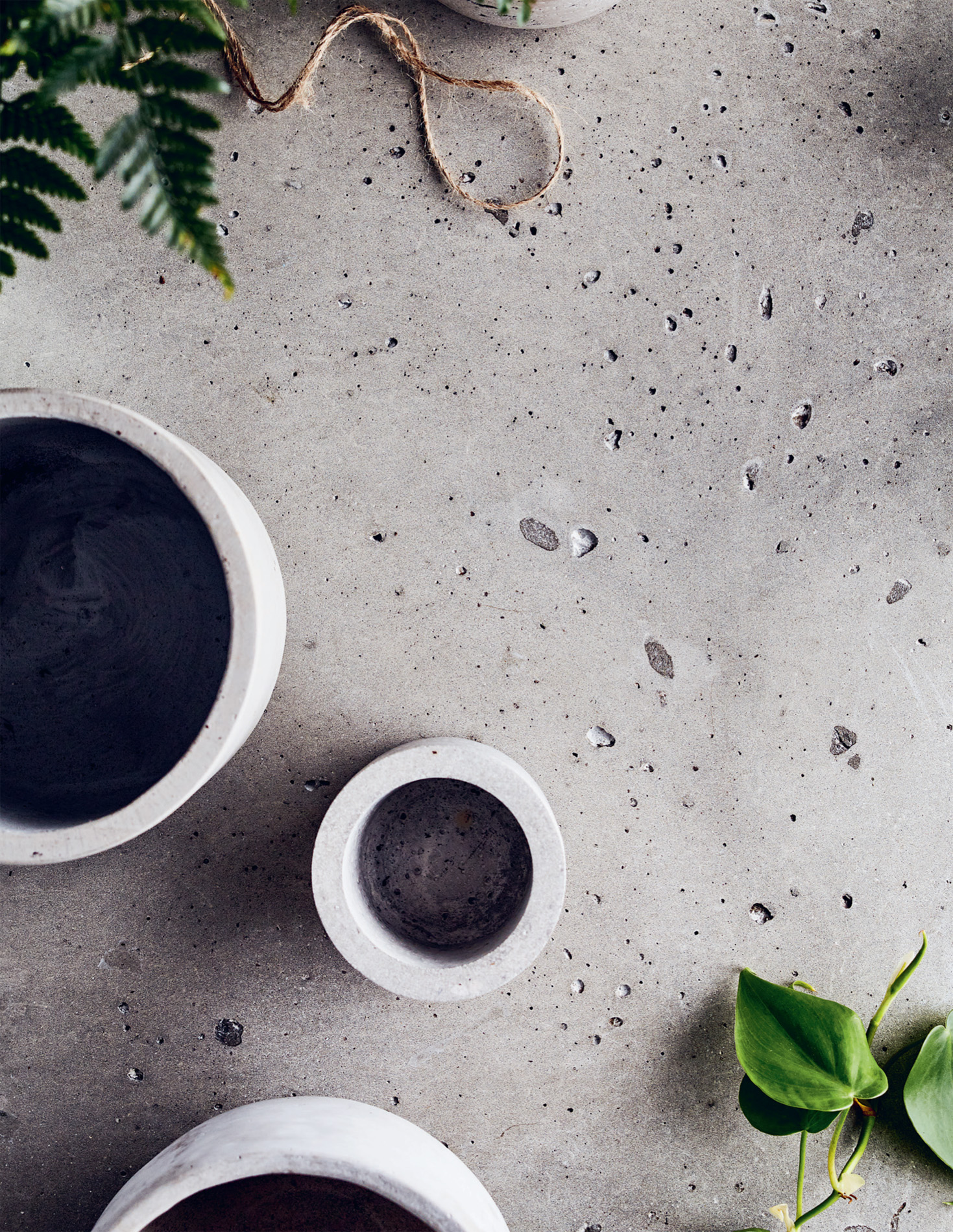
Living
with plants
In these modern times, with our ever-growing cities and centrally heated, air-conditioned homes and workplaces, we need plants more than ever. Our connection with plants is primal and we depend on them for our basic human needs, from the air we breathe to the food we eat.
Plants are not only the lungs of the planet, drawing in carbon dioxide and releasing oxygen back into the atmosphere, but also provide us with nourishment, shelter, warmth and medicine. Our ancestors respected plants, utilising the bark, seeds, roots, oils and fruit to maintain good health and combat disease. Their plant knowledge may have been both instinctive and acquired through trial and error, but with each successive generation that wisdom was increased. Today, we have a greater wisdom of the healing power of plants and their extraordinary range of properties: plants can help to keep us alert, calm us when we feel stressed, add goodness to our food and bring joy and beauty to our living and working spaces.
Plants regulate the earths atmosphere but also work particularly hard for us in our homes. In a bid to clean the air in space stations, scientists at NASA tested and identified the most efficient air-cleaning plants. These tests showed how plants filter out everyday pollutants from the air and release oxygen back into the environment. They add humidity into our dry, centrally heated homes and absorb volatile, often harmful compounds found in furnishings, DIY and cleaning products, and air fresheners.
We also relate to plants in more subtle ways. Although we do not have the same contact with nature our ancestors experienced, we do appear to have an inherent need to be in close proximity to the green world of plants and trees. Walking in the countryside in urban parks, and tending gardens have all been shown to be beneficial for our mental and physical health. But for those of us who live in flats or apartments with no outdoor space, growing and caring for houseplants is a fantastic way of re-establishing our bond with living plants. By bringing plants, such as those from the tropics, into the light and warmth of our home, we invite the outside in and add an exotic feel to our living space.
Caring for our plants can also reduce physiological and psychological stress. Simply looking at and touching plants is thought to lift our mood and when we bring plants into our workspaces, productivity and concentration levels can increase. Even when we are unwell, being in close proximity to plants can also facilitate healing and improve well-being. And plants are also beautiful: they bring a room to life in a way that a sofa or soft furnishings never can. Houseplants are widely available and the choice is huge: there has never been a better time to welcome plants into your home and to learn to care for them, and in turn let them care for you.
HOW TO USE THIS BOOK
This book has been written as a guide to help you learn more about the healing power of plants. Each themed chapter identifies the specific benefits of the plants that are profiled, and even if these are plants that you already have in your home, it is fascinating to learn more about their individual characteristics and needs. The more you know and understand about your plants, the more mutually beneficial your relationship with them will be. Love your plants and they will love you back.
A WORD ABOUT THE NAMING OF PLANTS
The naming of plants is a minefield. As well as the single Latin (botanical) name, most plants have at least a further five or six common names. The plants in this book are identified by one common name as well as the full Latin name (in italics), to avoid the confusion caused by contradictory common names. The Latin name starts with the genus; this is always capitalised and describes the group the plant belongs to. This is followed by the species name, which is always lower case and usually describes a specific characteristic of the individual plant. So in the case of the Panda Plant, Kalanchoe, tomentosa means woolly and describes the velvety leaves.
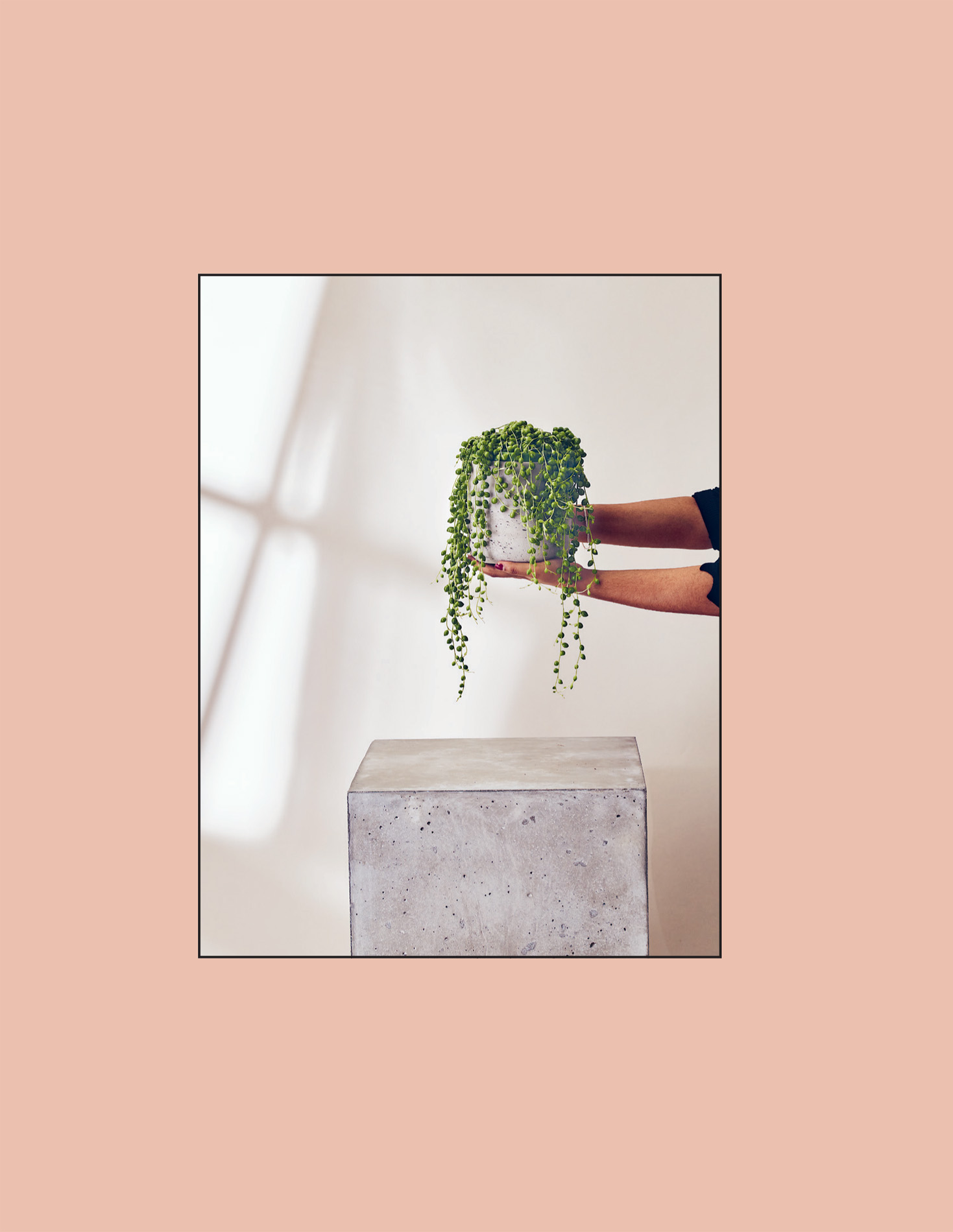
STRING OF PEARLS
Plants
for calm
and
relaxation
Well-placed plants give a relaxing, restful ambience to any room, and by bringing nature into your home you are helping to create a calmer and more grounded environment. Constantly seeing and being around plants, and even just looking at the colour green, helps us to feel calmer and ready for whatever life throws at us.
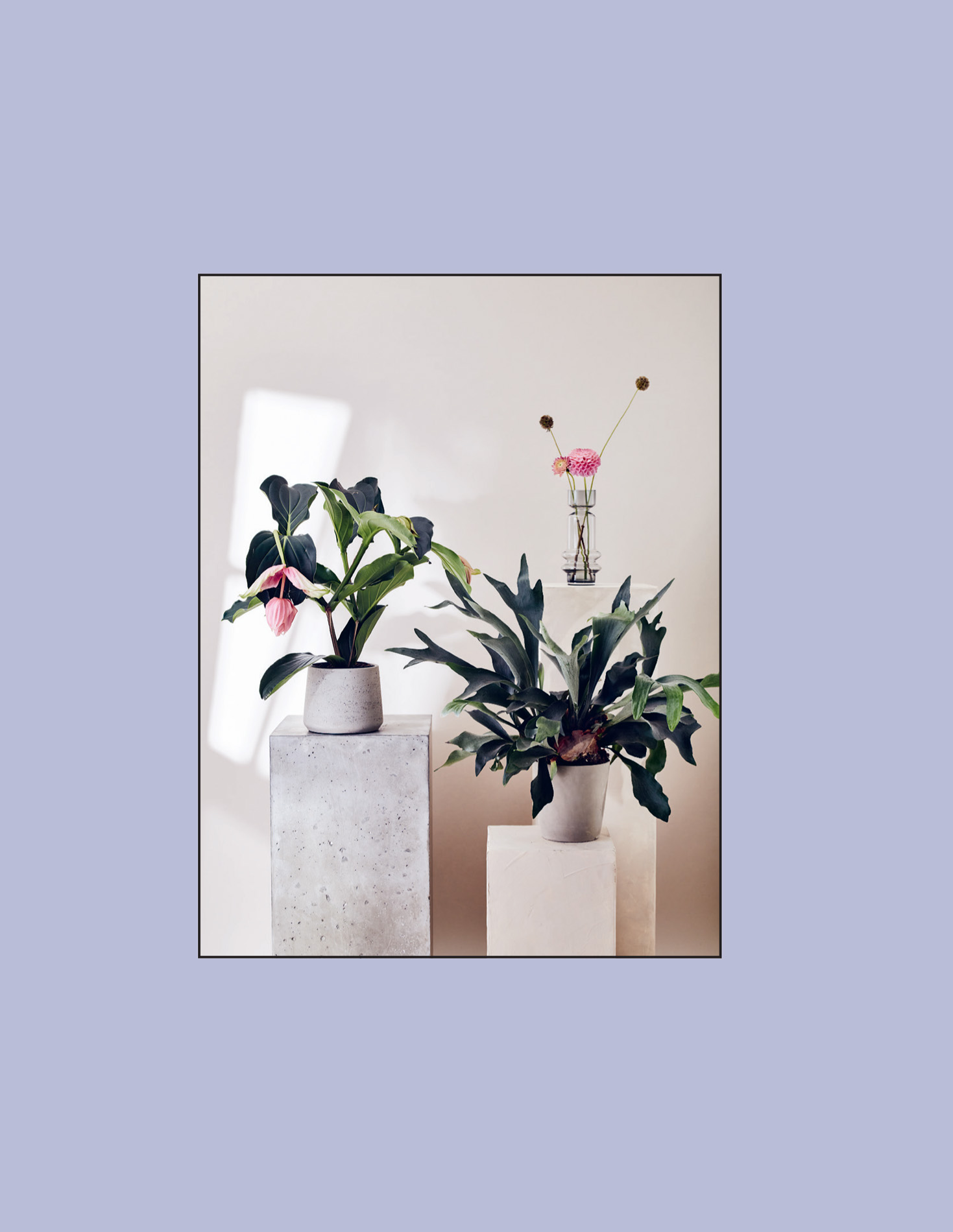
ROSE GRAPE AND STAGHORN FERN
PIN-STRIPE CALATHEA
CALATHEA ORNATA
 LIGHT Prefers a shadier position out of bright light, which may scorch the leaves. Look closely and you may notice how the leaves move position to adapt to the light conditions.
LIGHT Prefers a shadier position out of bright light, which may scorch the leaves. Look closely and you may notice how the leaves move position to adapt to the light conditions.
 HUMIDITY Loves high humidity so group Calathea with other plants to create a humid microclimate, or sit the pot in a tray of damp pebbles.
HUMIDITY Loves high humidity so group Calathea with other plants to create a humid microclimate, or sit the pot in a tray of damp pebbles.
 WATERING Water thoroughly so the compost is fully soaked and then allow to dry out between watering. If the plant is very thirsty it will roll up its leaves.
WATERING Water thoroughly so the compost is fully soaked and then allow to dry out between watering. If the plant is very thirsty it will roll up its leaves.
 CARE Calathea is the ideal candidate for brightening up that dingy corner in your living room but will be unhappy if put in a draught. For a healthy plant, feed with half-strength plant food every two weeks throughout the summer season and keep in a warm spot with temperatures above 16c.
CARE Calathea is the ideal candidate for brightening up that dingy corner in your living room but will be unhappy if put in a draught. For a healthy plant, feed with half-strength plant food every two weeks throughout the summer season and keep in a warm spot with temperatures above 16c.
Queen of the forest floor, this extraordinarily beautiful plant really deserves its popularity. This is not a plant for beginners, but given the right conditions it will thrive and can be long-lived. You will also find that the gentle grace of this plant brings a sense of calm to the room. The pink-striped leaves look hand-painted while the deep plum-coloured underside allows the plant to absorb low light. The key to keeping this beauty flourishing is to provide warmth, humidity and filtered light just as though it were at home in the Amazonian rainforest.
Next page
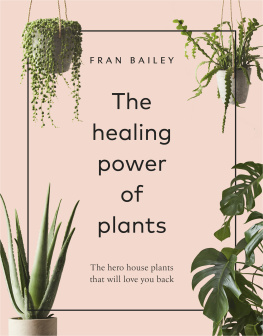






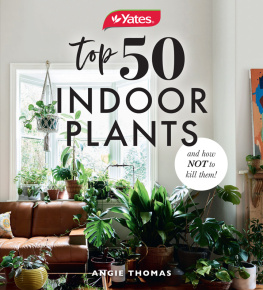




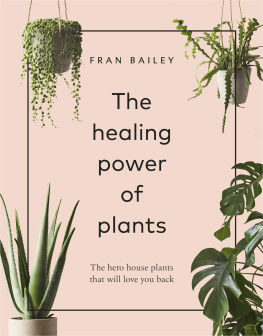

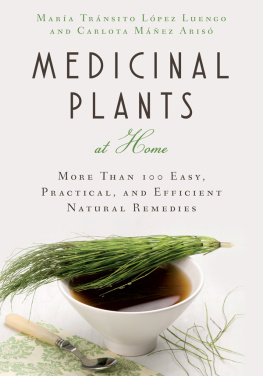





 STRING OF PEARLS
STRING OF PEARLS  ROSE GRAPE AND STAGHORN FERN
ROSE GRAPE AND STAGHORN FERN  LIGHT Prefers a shadier position out of bright light, which may scorch the leaves. Look closely and you may notice how the leaves move position to adapt to the light conditions.
LIGHT Prefers a shadier position out of bright light, which may scorch the leaves. Look closely and you may notice how the leaves move position to adapt to the light conditions. HUMIDITY Loves high humidity so group Calathea with other plants to create a humid microclimate, or sit the pot in a tray of damp pebbles.
HUMIDITY Loves high humidity so group Calathea with other plants to create a humid microclimate, or sit the pot in a tray of damp pebbles. WATERING Water thoroughly so the compost is fully soaked and then allow to dry out between watering. If the plant is very thirsty it will roll up its leaves.
WATERING Water thoroughly so the compost is fully soaked and then allow to dry out between watering. If the plant is very thirsty it will roll up its leaves. CARE Calathea is the ideal candidate for brightening up that dingy corner in your living room but will be unhappy if put in a draught. For a healthy plant, feed with half-strength plant food every two weeks throughout the summer season and keep in a warm spot with temperatures above 16c.
CARE Calathea is the ideal candidate for brightening up that dingy corner in your living room but will be unhappy if put in a draught. For a healthy plant, feed with half-strength plant food every two weeks throughout the summer season and keep in a warm spot with temperatures above 16c.